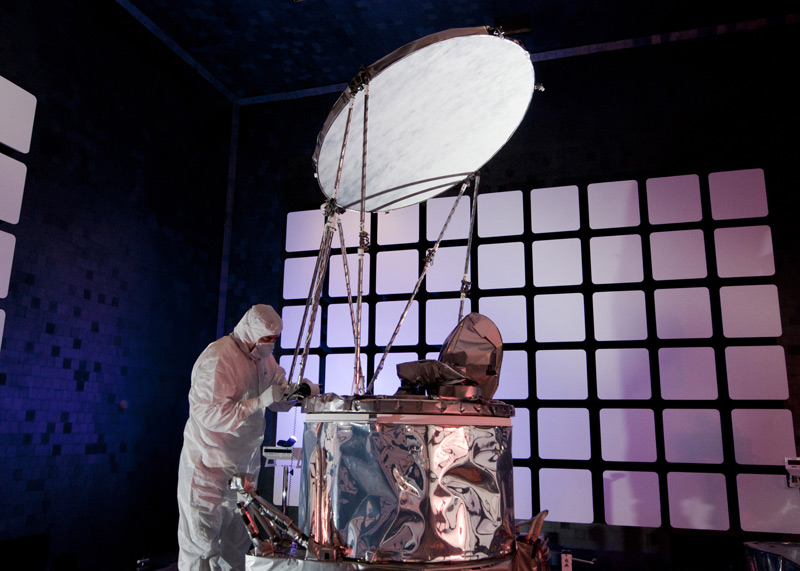Latest News

The Global Precipitation Measurement Microwave Imager (GMI) for NASA’s Global Precipitation Measurement mission undergoes electromagnetic interference and compatibility testing at Ball Aerospace. Photo: Ball Aerospace.
The U.S. Air Force’s Space and Missile Systems Center (SMC) has selected Ball Aerospace to deliver the operational environmental satellite system, Weather System Follow-on Microwave (WSF-M), for the Department of Defense (DOD). WSF-M is a predominantly fixed-price contract for the system design and risk reduction of a Low Earth Orbit (LEO) satellite with a passive microwave imaging radiometer instrument and hosted furnished Energetic Charged Particle (ECP) sensor.
According to Ball Aerospace, the contract will include options for the development and fabrication of two LEO satellites as well as options for launch vehicle integration, launch and early orbit test, and operational test and evaluation support. This mission will improve weather forecasting over maritime regions by taking global measurements of the atmosphere and ocean surface.
As the prime contractor, Ball will be responsible for developing and integrating the entire microwave system, which includes the microwave instrument, spacecraft and system software. WSF-M is designed to mitigate three high priority DOD Space-Based Environmental Monitoring (SBEM) gaps: ocean surface vector winds, tropical cyclone intensity and LEO energetic charged particles.
This new environmental satellite system leverages the Ball-built Global Precipitation Measurement (GPM) Microwave Imager (GMI) instrument, which is the on-orbit reference standard for calibrating precipitation measurements in NASA’s GPM constellation.
Ball Aerospace recently contributed to the spacecraft design of both the Joint Polar Satellite System (JPSS 1) and the Suomi National Polar-orbiting Partnership (Suomi NPP).
Get the latest Via Satellite news!
Subscribe Now